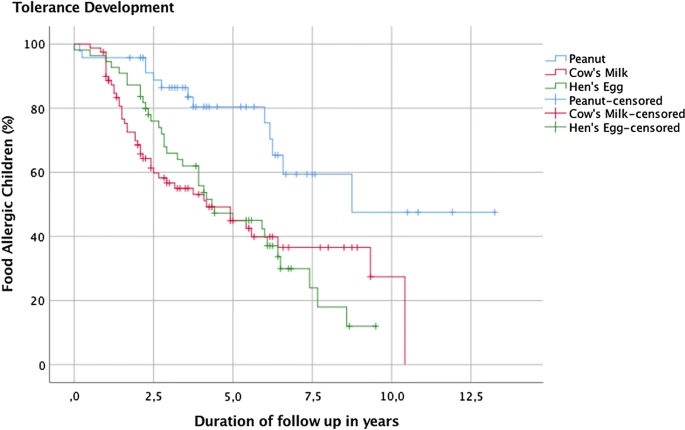- Letter to the Editor
- Open Access
Abstract
Background
 |
| Kaplan-Meier survival curve in peanut, cow’s milk and hen’s egg allergic children |
Tolerance development rates differ between food allergies. Almost all previous studies have not used the gold standard method, the double-blind, placebo-controlled food challenge (DBPCFC), which may affect the reported prevalence rates. Little is known about the association of the eliciting dose (ED) obtained during the initial DBPCFC with later tolerance development.
Methods
This was a retrospective, tertiary care study of children who had a positive DBPCFC to either peanut, milk or egg, and at least one follow-up food challenge (open or DBPCFC) with the same food. The association between ED and negative (tolerant) follow-up food challenge outcome was analyzed by logistic regression, with adjustment for confounders. Suspected confounders were initial DBPCFC test characteristics, atopic comorbidities and serum specific IgE (sIgE) levels.
Results
In 47 peanut allergic children, tolerance developed in 27.7% (median follow-up duration of 43 months). In 80 milk (follow-up 23 months) and 55 egg (follow-up 37 months) allergic children, tolerance developed in 55.0% and 65.5%. The ED obtained during the initial DBPCFC was significantly associated with tolerance development in peanut and milk allergy, but not in egg allergy.
Conclusion
Approximately 1 out of 4 children with DBPCFC confirmed peanut allergy developed tolerance, compared to more than half of the children with milk or egg allergy, respectively. Tolerance development in peanut and milk allergy is significantly associated with ED at initial DBPCFC.
No comments:
Post a Comment